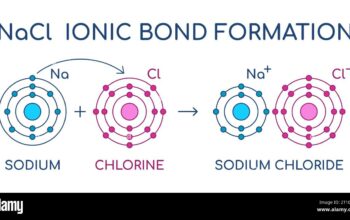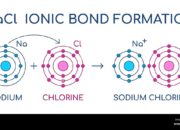The inquiry into the shape of hydrogen atoms invokes profound principles of quantum mechanics and atomic structure. As the simplest and most abundant element in the universe, hydrogen serves as a fundamental building block in understanding atomic theory. One may ponder: why do hydrogen atoms possess a spherical configuration? This exploration marries the elegance of physics and modern chemistry, compelling us to rethink atomic morphology.
To comprehend why hydrogen atoms are spherical, one must delve into the nature of atoms themselves. At an elementary level, atoms are composed of protons, neutrons, and electrons. Hydrogen, in its most prevalent isotope, consists of merely one proton in its nucleus and a singular electron in its electron cloud. This understated simplicity contrasts sharply with more complex elements, yet holds an intrinsic elegance. In quantum mechanics, the position of an electron is not dictated by classical mechanics, thus dispelling the notion of fixed orbits characteristic of early atomic models.
The electronic structure of hydrogen is described using atomic orbitals, specifically the 1s orbital for its lone electron. The 1s orbital is spherically symmetric, a consequence of the wave function solutions of the Schrödinger equation for a hydrogen atom, where the probability density of locating the electron at any point around the nucleus exhibits a spherically uniform distribution. As one moves away from the nucleus, the likelihood of finding the electron remains isotropic, presenting a compelling reason for the spherical characterization of hydrogen atoms.
The electron does not occupy a fixed path, as would be anticipated in classical physics; rather, it exists within a probabilistic framework. The waveform nature of the electron encapsulates the nuances of quantum mechanics, invoking a notion where position and momentum coexist in uncertainty. This quantum perspective is pivotal in understanding why hydrogen, despite its simplistic structure, encapsulates a complexity that defies initial intuition.
Equally important to this discourse is the electrostatic attraction between the positively charged proton and the negatively charged electron. This force governs the interaction profoundly, perpetuating a stable equilibrium where the electron exists in a constant, albeit uncertain, distribution around the nucleus. Here, principles of Coulomb’s law emerge, underlining the centripetal force that maintains the electron’s orbital “cloud” around the nucleus, confirming a spherical symmetry in the overall atomic model.
Advancing further, the concept of symmetry within physical systems is widely studied. The spherical symmetry of hydrogen embraces aesthetic and functional dimensions ingrained in nature. Symmetry minimizes potential energy, establishing a stable configuration that aligns with experiences of equilibrium common in other physical entities. A sphere embodies balance in three-dimensional space, suggesting an intrinsic tendency toward this shape for stable atomic systems, driven largely by the universal forces at play.
Furthermore, considering the ramifications of quantum mechanical principles in multi-electron atoms reveals the complexities of electron-electron interactions. While hydrogen’s single electron promotes a straightforward interpretation, as atomic number increases, electrons exhibit repulsive forces, complicating their spatial arrangement. Ionic and covalent bonding in larger atoms can result in shapes deviating from the spherical symmetry inherent to hydrogen. This illustrates a fascinating transition from hydrogen’s simpler form to complex molecular structures, inviting deeper exploration of atomic behavior.
Notably, advancements in spectroscopy and modern visualizations of atomic structures continue to validate the spherical distribution of electrons in hydrogen. Techniques such as scanning tunneling microscopy unveil the probability distributions of electrons with high precision, reinforcing the theoretical underpinnings of quantum mechanics. The visibility of these distributions enables scientists to visualize atomic configurations that align with quantitative predictions, thus enhancing our understanding of atomic bias toward spherical formations.
This inquiry also provokes broader philosophical questions regarding the nature of reality at the quantum level. Do spherical hydrogen atoms reflect an intrinsic characteristic of nature whereby simplicity begets complexity? Is the elegance of hydrogen’s atomic configuration an analogy for the larger cosmos, where simplicity and complexity are inextricably linked? This contemplation calls for interdisciplinary discussions, inviting the realms of philosophy and the natural sciences to converge, expanding the dialogue on the nature of existence itself.
Lastly, hydrogen’s role transcends mere atomic structure; it is paramount in the universe’s creation and sustenance. From the primordial nucleosynthesis shortly after the Big Bang to its pivotal role in stellar processes, hydrogen fuels stars and engenders life as we know it. Understanding why hydrogen atoms are spherical not only enriches our knowledge of atomic theory, but also underscores the essential role hydrogen plays in the fabric of the universe.
Conclusively, the spherical nature of hydrogen atoms serves as a microcosm of the interconnectedness of forces, morphology, and the principles governing atomic interactions. Hydrogen encapsulates luscious avenues for exploration—provoking curiosity, inspiring deeper understanding, and illustrating the sublime elegance inherent to the foundations of chemistry and physics. With every inquiry into atomic design, we are reminded that the universe is a tapestry of mysteries awaiting contemplation.












